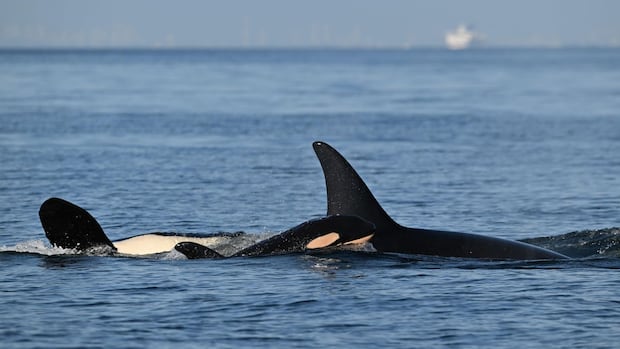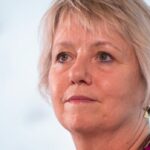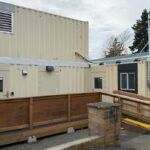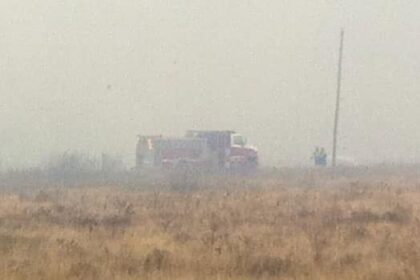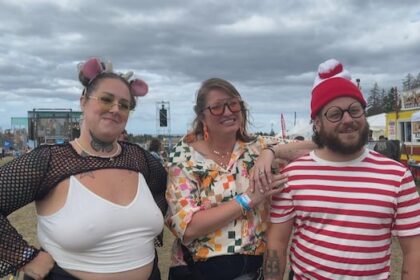British ColumbiaThe new baby, J64, arrived about a week after another calf in the pod was spotted dead in September. Researchers say only about half of the species’ calves make it through their first year of life. First few months of life for the endangered whales are fragile, says expert at Center for Whale ResearchCBC News · Posted: Oct 22, 2025 12:00 PM EDT | Last Updated: 2 hours agoThe new orca calf, J64, centre, was spotted on Sept. 23 swimming next to its mom, J42, along with the rest of the pod. (Center for Whale Research)A new orca calf has been observed swimming with its family in Active Pass, near Mayne and Galiano islands in B.C.The baby, J64, arrived about a week after another calf in the pod was spotted dead last month, said Michael Weiss, research director at the Center for Whale Research.J64 was first reported to the centre on Sept. 18, and was then sighted by the centre’s own researchers on Sept. 23, with the entirety of its pod.“This calf was where it was supposed to be, right alongside its mom. It was pretty socially well integrated, a lot of young females were spending a lot of time around this calf,” Weiss said.The J pod is part of the southern resident killer whale population. They are highly social animals and tend to stay with their family for life, according to Parks Canada.While the birth of a young whale is cause for celebration, only half of the young orcas make it through their first year of life. Orcas, Weiss said, are a bit lumpy and wrinkly when they’re born and need to start nursing to put on weight.“These first few months are really quite difficult and quite critical,” Weiss said.J64 swims between three other whales, including its mom, J42. Research director Michael Weiss says the first few months of life are a critical time for orca calves. (Center for Whale Research)J64’s behaviour and “surfacing patterns” showed it may have been attempting to nurse, although the researchers — who are based in Washington state — were not able to confirm if there was milk flowing from its mom, J16.“The pattern suggested that it was kind of in that nursing position. So all of those are good signs,” Weiss said.The southern resident orcas are listed as endangered under Canada’s Species at Risk Act, and as of January 2025 there were fewer than 75 left, according to Parks Canada.The resident whales are a genetically and culturally distinct species, and also include the K and L pods, says the Canadian agency.Weiss said that prior to J64’s birth, there were 27 whales in J pod, and it’s the only pod that’s growing.“Every single birth we can get in this population is, is really, really precious,” he said.“Their birth rate, while higher than the other two pods, is still much lower than it should be when we look at other killer whale populations in the region,” he said.That’s due to several environmental and health factors, Weiss explained. The whales are full of pollutants, noise pollution from marine vessels impedes their ability to echolocate and hunt, and there’s a lack of appropriate salmon to eat. This lack of prey, he said, leads to increased pregnancy failures and increased mortality.“When I talk about, you know, having hope for the future and wanting to increase the birth rate in these whales, what we’re really talking about is recovering Chinook salmon populations.”With files from Tessa Vikander and Lauren Vanderdeen
New J pod orca calf spotted in B.C. waters looking ‘well integrated’: researchers
